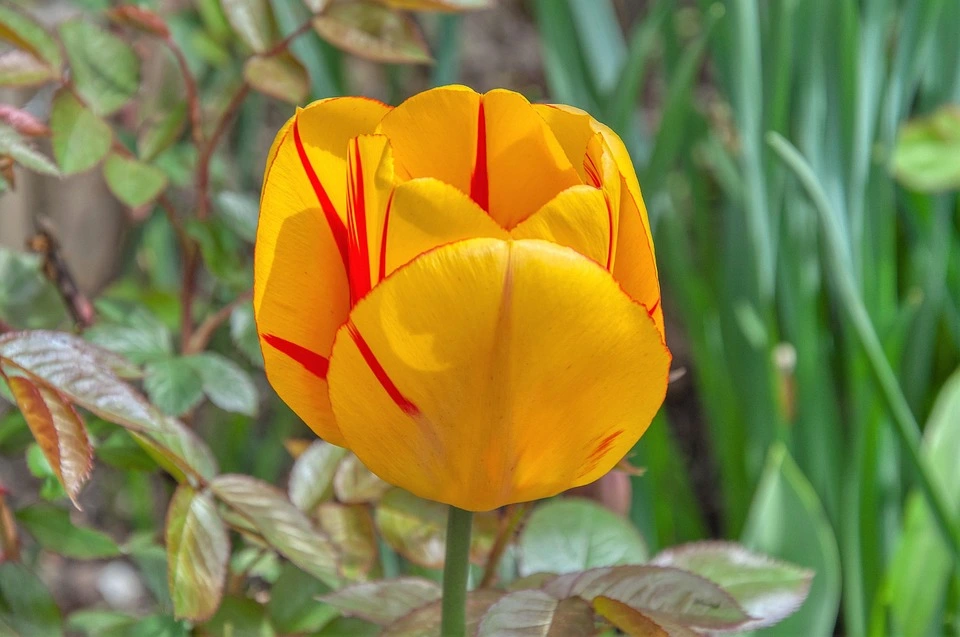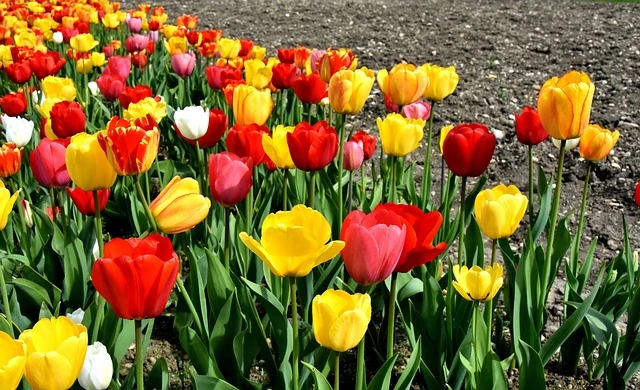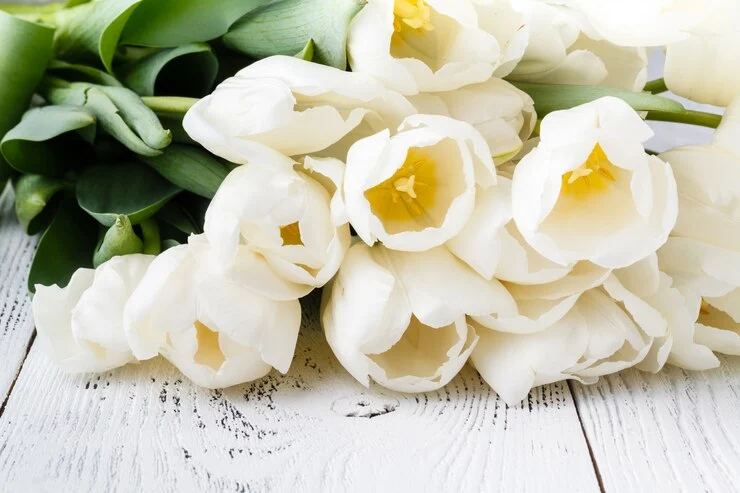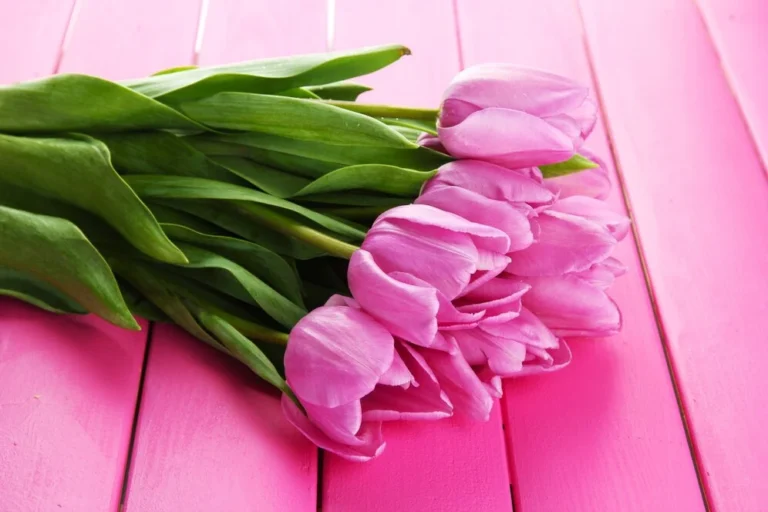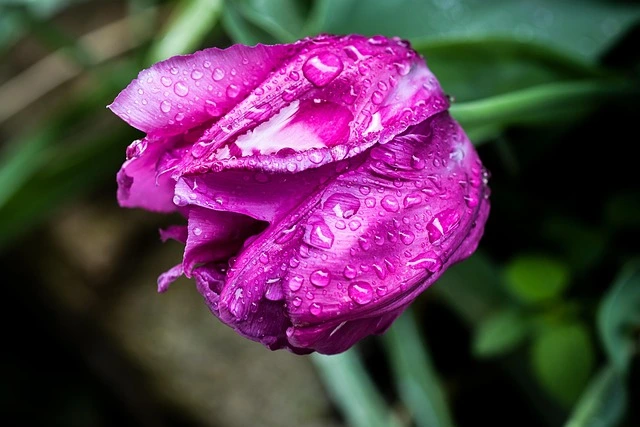The Vibrant Beauty of Yellow Tulips: A Complete Growing Guide
Table of Contents
Have you ever wondered why yellow tulips consistently rank among the top 5 most popular spring bulbs despite requiring specific growing conditions that many gardeners find challenging? While red and pink varieties often get the spotlight, yellow tulips possess a unique ability to brighten gardens with their sunny disposition and surprising versatility across different landscape designs. Their widespread appeal stems from both their cheerful aesthetic and their fascinating cultural significance throughout history.
The Allure of Yellow Tulips
Yellow tulips stand out in any garden setting with their brilliant golden hues ranging from pale lemon to deep amber. These striking flowers symbolize cheerful thoughts, sunshine, and hope in the language of flowers. Dating back to their introduction to Europe from the Ottoman Empire in the 16th century, yellow tulips have maintained their popularity for centuries.
The vibrant yellow blooms create an immediate focal point in spring gardens, perfectly complementing blue, purple, and white flowers. Their ability to brighten even shady corners makes yellow tulips a favorite among landscape designers and home gardeners alike.
Popular Yellow Tulip Varieties
Several yellow tulip varieties have earned recognition for their exceptional beauty and growing characteristics:
Golden Apeldoorn – A Darwin hybrid tulip with large, goblet-shaped blooms in a rich golden yellow. Standing tall at 20-22 inches, these sturdy tulips hold up well against spring winds and rain.
Yellow Emperor – This triumph tulip features elegant, slightly pointed petals in a soft butter yellow with delicate red flaming. Growing to approximately 16 inches tall, it’s perfect for mid-border plantings.
Monte Carlo – A double early tulip with luxurious peony-like blooms in a bright sunshine yellow. Their compact height (10-12 inches) makes them ideal for container gardens and front borders.
West Point – This lily-flowered yellow tulip displays graceful, pointed petals that curve outward at the tips. The elegant form and bright lemon-yellow color make it a standout in formal garden designs.
Yellow Present – A late-flowering single tulip with a perfect cup shape and consistent clear yellow color. These reliable bloomers extend the tulip season well into late spring.
Growing Yellow Tulips Successfully

Yellow tulips, like their colorful cousins, require specific growing conditions to thrive and return year after year.
Planting Time and Location
Plant yellow tulip bulbs in the fall, approximately 6-8 weeks before the ground freezes. Choose a location with full to partial sun exposure, as yellow tulips need at least 6 hours of sunlight daily for optimal blooming. The planting site should have well-draining soil to prevent bulb rot, one of the most common causes of tulip failure.
Soil Preparation and Planting Depth
Yellow tulips prefer slightly alkaline to neutral soil with a pH between 6.0 and 7.0. Before planting, amend heavy clay soil with compost or sand to improve drainage. Plant bulbs at a depth approximately three times their height (usually 6-8 inches deep) with the pointed end facing up. Space bulbs 4-6 inches apart to allow proper air circulation and growth.
Watering and Fertilization
Water newly planted tulip bulbs thoroughly, then reduce watering until spring growth emerges. Yellow tulips benefit from a balanced bulb fertilizer applied at planting time and again when shoots appear in spring. Avoid high-nitrogen fertilizers that promote leaf growth at the expense of flowers.
Post-Blooming Care
After yellow tulips finish blooming, remove spent flowers to prevent seed production, which diverts energy from the bulb. Allow the foliage to yellow and die back naturally, as this process returns nutrients to the bulb for next year’s growth. Consider lifting bulbs after foliage dies if you live in warm regions (USDA zones 8 and above) where tulips rarely perennialize.
Combining Yellow Tulips in Garden Design
Yellow tulips create stunning visual impact when thoughtfully incorporated into garden designs:
Classical Pairings – Plant yellow tulips with purple grape hyacinths or blue muscari for a striking complementary color scheme that highlights the brightness of the yellow.
Monochromatic Displays – Create depth by combining different yellow tulip varieties with daffodils and forsythia for a golden spring showcase.
Contemporary Contrast – Pair yellow tulips with deep purple or burgundy foliage plants like heuchera for a modern, high-contrast look.
Naturalized Settings – Scatter yellow tulips among ornamental grasses or woodland perennials for a more casual, naturalistic appearance.
Protecting Yellow Tulips from Pests and Diseases
Yellow tulips can face challenges from various pests and diseases. Protect your investment by implementing these preventative measures:
Squirrel and Rodent Protection – Apply hardware cloth over newly planted areas or mix sharp gravel with soil around bulbs to deter digging.
Deer Resistance – While no tulip is truly deer-proof, interplanting yellow tulips with highly aromatic herbs like lavender or strongly scented daffodils can help reduce browsing.
Disease Prevention – Plant bulbs in well-draining soil and avoid overhead watering to prevent botrytis blight and other fungal issues that can affect yellow tulips.
Yellow Tulips as Cut Flowers
Yellow tulips make exceptional cut flowers, lasting 5-7 days in arrangements with proper care. Cut stems when buds are colored but not fully open, and place immediately in cool water. Add flower preservative to extend vase life, and keep arrangements away from fruit (which releases ethylene gas that shortens bloom time) and direct sunlight.

FAQs About Yellow Tulips
Do yellow tulips come back every year?
Yellow tulips, like most tulip varieties, perform best in their first year. In ideal conditions (cold winters, dry summers), many yellow tulips may return for 2-3 years, particularly Darwin hybrids like ‘Golden Apeldoorn’. For reliable yearly displays, many gardeners treat tulips as annuals, planting fresh bulbs each fall.
Which yellow tulip variety blooms the longest?
Yellow Emperor’ triumph tulips typically have the longest bloom period among yellow varieties, often lasting 2-3 weeks, especially when planted in partial shade. For extended seasonal display, plant early, mid, and late-season yellow tulip varieties together.
Can yellow tulips grow in containers?
Yes, yellow tulips thrive in containers, particularly shorter varieties like ‘Monte Carlo’. Use pots at least 12 inches deep with drainage holes, plant bulbs closer together than in ground (3-4 inches apart), and protect containers from extreme winter temperatures.
Why are my yellow tulips turning green?
When yellow tulips develop green streaking or fading, it’s typically due to temperature fluctuations or age. This natural process, called virescence, affects many yellow tulip varieties as they mature. For purely yellow blooms, cut flowers when they first open.
Which pollinators do yellow tulips attract?
Yellow tulips primarily attract bees and some butterfly species, which are drawn to their bright color and accessible pollen. Early-flowering yellow tulip varieties provide important early-season food sources for emerging pollinators.
With their sunny disposition and versatile growing habits, yellow tulips deserve a place in every spring garden. Whether planted en masse for dramatic effect or tucked into containers for bursts of brightness, these golden beauties deliver unmatched cheer and color when gardens are awakening from winter’s rest.
Share Your Opinion,Did You Find The Article Helpful ?
There are no reviews yet. Be the first one to write one.
